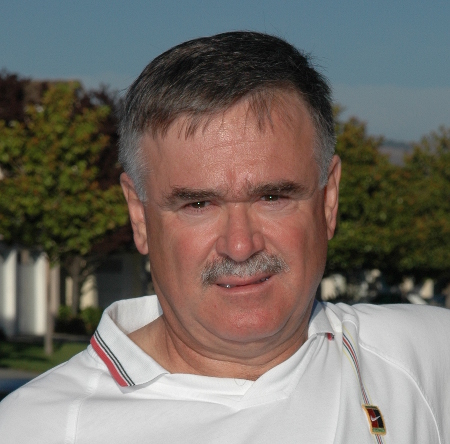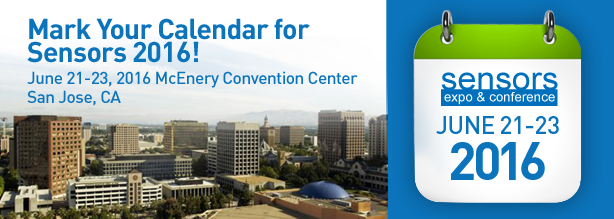Janusz Bryzek, sometimes referred to as “The Father of Sensors” and “The Trillion Sensor Man”, is the Chairman and CEO of TSensors Summit. He holds an MSEE and Ph.D. from Warsaw Technical University, Poland and has completed the Executive Management Program at Stanford University.

Dr. Janusz Bryzek, a.k.a., “The Father of Sensors” and “The Trillion Sensor Man”
An early MEMS champion, Dr. Bryzek is co-founder of nine MEMS companies in Silicon Valley. Inspired in part by a very popular book, “Abundance” by Peter Diamandis and Steven Kotler, he is the primary force behind the TSensors Summit. Unlike traditional product-focused tradeshows, the summit hosts a forum for visionaries similar to Dr. Bryzek to air views, observations, forecasts, and opinions on which sensor technologies will be the big players in the trillion sensor future. Now in its third year, TSensors Summit will take place this year at the Florida Hospital Nicholson Center, Orlando, Florida on Wednesday December 9 and Thursday December 10, 2015.
As a prelude to the event, a teaser if you will, we caught up with Dr. Bryzek and managed to briefly take him away from an extremely busy schedule to answer a few questions about the current and future state of affairs in the world of sensors and sensor technology. We thank him for his time and insights.
MD: As sensors are found in just about all things electronic, it is apparent that your vision of a trillion sensors is becoming a reality with concepts like the Internet of Things, the Industrial Internet of Things, advanced networking through mobile devices, etc. How much nearer in time are we to the reality of a trillion active sensors and how much further do you believe it will advance from there?
Dr. Bryzek: Sensors are a foundation for multiple global economic tides. The biggest is IoT, with 10 year growth estimated by GE at $32.5 trillion, twice the size of today’s US economy. mHealth is expected by Peter Diamandis to grow to $3.8T by 2025, from about a $1 billion today. These growths are likely sufficient to drive sensor growth to a trillion units by 2025.
The boldest current forecast for sensors is 100 trillion units by 2030.
MD: What do feel are the top most benefits to both individuals and businesses by the mass deployment of sensors and the systems they will interface to?
Dr. Bryzek: In the applications known today, sensors enable improvement of operating efficiencies, lower operating cost, improve uptime, lower pollution, improve energy efficiency, increase safety, enable new features, provide more fun and enable better healthcare.
The emerging disruptive applications will have much bigger impact, redefining our future lives.
MD: MEMS technology has been around for some time, yet there are some in the tech sector that feel MEMS is either still in its infant stages, particularly when it comes to sensors and related applications. The most often cited opinions are MEMS devices are still too expensive and/or they are as easily adaptable to high levels of integration, i.e., the ability to fuse several sensor types into one device. What is your take on these opinions and what do believe are the strengths and/or weaknesses offered by MEMS technology?
Dr. Bryzek: MEMS technology is a foundation for a large volume (about 14 billion in 2015) of the sensor market. The fastest growing market segment was mobile, increasing MEMS sensor consumption at the neck breaking pace over 200%/y over the last 8 years. This brought dramatic selling price reduction (100x to 100x depending on the sensor) and similar power, size and weight reduction. In parallel, the number of transistors/sensor increased 1000 times.
MEMS provides excellent mechanical properties, as well as relatively easy way to integrate electronics. Hundreds of sensor types were demonstrated using MEMS technology. The billion units/year production level was reached for multiple MEMS-based sensors: microphones, acceleration sensors, magnetic sensors, gyroscopes and pressure sensors. Selling price for microphones, acceleration sensors and magnetic sensors have dropped under $0.25 in billions units/year.
Non-MEMS-based sensors are fabricated using a broad range of technologies, some based on pure semiconductors (such as image sensors). Major problem with sensors, including MEMS, is “one product - one process” implementation. Selected manufacturers were able to develop a platform enabling several mechanical sensors to be fabricated in the same process, but no standard processes similar to ICs exist. This is a drop in a bucket from the perspective of hundreds of new sensor types reaching market. Due to their diversity, it is difficult to develop a common platform. As a result, the average time from MEMS prototypes to large volume production averaged 27 years per Yole report or 30 years per Grace-Walsh Mancef report.
Reaching trillions units per year creates new challenge: cost. Unit sensor cost will need to drop by two orders of magnitude in comparison to current pricing. Such price reduction will be possible through adoption of roll-to-roll printed electronics, for both transistors and sensors. Each Internet connected node will likely have many (100s?) sensors, most using the emerging printed MEMS technology.
The emerging theme seems to imply that traditional MEMS technologies will support billions of sensors, but trillions will be supported by printed technologies.
MD: Which sensor types (i.e., pressure, temperature, position, level, etc.) do feel will be in the greatest demand as sensor deployments accelerate? Will there be an equal demand across the spectrum of applications or do you see more specializing?
Dr. Bryzek: Many of the existing sensor types, such as temperature, motion, pressure, etc., will ship in increasing volumes.The trillions, however, will be served mainly by new categories of printed sensors, with new ultrahigh volume applications such as:
- New health sensors will redefine healthcare, converting medical diagnostics for the first time in history to statistically-based and taking diagnostics away from doctors (who are only 55% right in the US). Diagnostics will be driven by intelligent supercomputers in our mobile devices. Such computer systems will use Big Data including ALL medical knowledge in the World, and patient’s information derived from hundreds and thousands of personal health sensors. The emerging unobtrusive health monitoring systems will be based on emerging large area electronics embedded in the surrounding infrastructure, such as walls, beds, cars, desks, etc. enabling continuous unobtrusive collection of health data. Such wireless electronics will track our position 24/7, collecting health information. New generation of unobtrusive health sensors will test our DNA, biomes, blood, etc., enabling rollout of preventive healthcare.
- Pollution (chemical) sensors will enable development of global air, water and soil pollution map, tracking chemical, biological, pollutant and radiation pollution across the globe. This will require 100s of sensor types deployed in billions of locations on Earth. It will enable detection of terrorists’ threats, reduction of pollution, selection of healthier vacation locations, and multiple unknown yet applications.
- Smart fabric has emerged, enabling embedding nanotechnology based sensors, electronics, displays and energy harvesters.
- Large area electronics will shift the paradigm for electronics from “smaller is better” (Moore’s law) to “lowest cost per square meter” is better. Walls of our homes and offices will be stuffed with a broad range of printed sensors.
- AgTech, Agricultural Technology, has need for a broad range of sensors, such as nitrogen, moisture, root size, diseases, etc. Some envision planting wireless sensors with seeds to monitor their growth and health.
- Billions of robots supporting personal life, transportation, agriculture, and healthcare/elder care will massively use large number of sensors and will be covered with smart skins with embedded touch, force, humidity, pressure, vision, proximity, smell, taste, and many other sensors.
- Trillions of food packages will have embedded freshness sensors along with temperature, humidity, vibration and others, to enable improvement of food quality and reduction of food spoilage.
MD: Which markets (i.e., automotive, aerospace, military, medical, consumer, etc.) do foresee offering the greatest growth due to sensor advances and why?
Dr. Bryzek: Automotive market is undergoing major transformation driven by autonomous vehicles stuffed with advanced sensors. In parallel, emergence of electric and hydrogen based engines and forecasted obsolescence of combustion engines by 2030, will reduce the need for many sensors. In total, this market segment will cumulatively absorb billions of sensors.
- Aerospace market, while using large number of sensors per aircraft, will cumulatively use millions of sensors,
- Medical market, specifically mHeath, will be a major driver pulling new health sensors and deploying them as unobtrusive device by trillions on large area electronics, representing the new IT market.
- Consumer market will be another large volume driver, with mobile and wearable markets absorbing billions of sensors.
- IoT will migrate to IoE (Internet of Everything), deploying sensors on trillions of disposables (packages, food, washing powder, soap, etc.). Major driver will be the hunger for data. It is expected by some that sensor generated data will reach a BrontoByte (1027) by 2025. Data processing extracting useful information from Big Data is expected to generate between 50% and 90% of global profits by 2025.
MD: When we reach the trillion-sensor mark, what do you envision in terms of progress within the realm of sensors other than the deployment of more devices?
Dr. Bryzek: Major visible sensor trends in path to trillions include:
- Transition to printed sensor technologies.
- Emergence of sensor arrays, wherein multiple sensors exist in each node connected to Internet.
- Emergence of new sensor fusion based on deep learning. Deep learning promises automated development of multidimensional algorithms fusing large number of sensors, for example to improve their performance (e.g., achieving super selectivity of 100s of cheap chemical sensors, each with large cross sensitivity) or enabling forecasting based on Big Data of seemingly uncorrelated information.
- Generation of BrontoBytes of data, shifting profit generation from hardware to analytics. Sensor companies not generating Big Data and not processing Big Data generating by their sensors will have low margins. To rectify this problems, sensor companies will need to become software companies.
It seems quite clear from the topics covered that sensor maker are going to need to become more versatile in the not so far future in they want to get a piece on the market, let alone survive. Logically speaking, that also tells you who should be paying a visit to TSensors Summit and Sensors Expo 2016. ~MD

